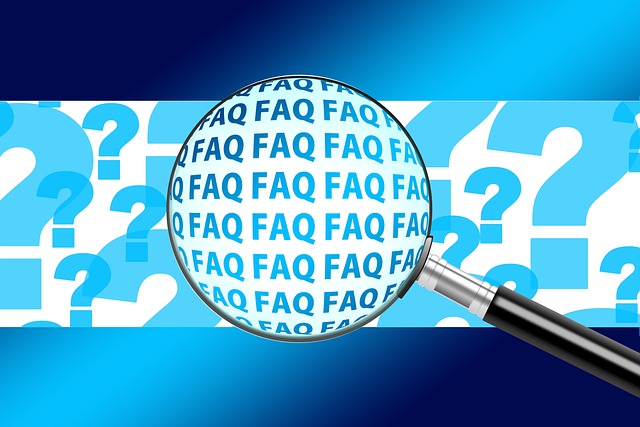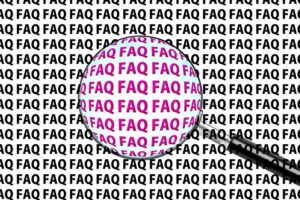Google FAQ Rich Results enhance search engine visibility and user experience by displaying interactive question-and-answer snippets directly on SERPs. Webmasters can optimize their websites for these rich results using the FAQPage schema and Accordion Schema SEO format, improving click-through rates, reducing bounce rates, and attracting organic traffic. Implementing this schema involves defining FAQ page types, structuring Q&A pairs with specific HTML tags, optimizing for relevant keywords, and continuously testing and refining content based on analytics data to achieve better search engine rankings and increased user engagement. Measuring key performance indicators helps optimize FAQ pages, increasing the likelihood of being featured as a Rich FAQ Result in Google's search results.
Adding the FAQPage schema to your website content is a strategic move that can significantly boost user engagement and search engine visibility. With Google’s focus on enhancing user experience, implementing this schema becomes crucial for capturing rich FAQ results in search engines. This article delves into the impact of Google FAQ Rich Results on SEO, explores the benefits of integrating FAQPage schema, provides a step-by-step guide to implementation, and offers insights into measuring success for optimal SERP visibility.
- Understanding Google FAQ Rich Results and Their Impact on SEO
- Why Add FAQPage Schema to Your Website Content?
- Key Components of the FAQPage Schema Markup
- Implementing FAQPage Schema: A Step-by-Step Guide
- Benefits of Enhanced User Engagement with FAQ Rich Results
- Measuring Success and Optimizing for Better SERP Visibility
Understanding Google FAQ Rich Results and Their Impact on SEO

Google FAQ Rich Results are a powerful feature that enhances search engine results pages (SERPs) with interactive and detailed answers to user queries. These rich snippets, often displayed in a panel at the top of search results, provide direct access to frequently asked questions and their corresponding answers. By utilizing the FAQ Page schema, webmasters can tap into this opportunity and significantly improve their site’s visibility and click-through rates.
When implementing the Google FAQ Rich Results, it’s crucial to optimize your FAQ snippet. This involves structuring your content using the Accordion Schema SEO format, ensuring each question and answer pair is clearly defined. By following best practices for FAQ schema implementation, including how to add FAQ schema markup correctly, you can attract more organic traffic and create a better user experience. FAQ Snippet Optimization plays a vital role in this process, as it allows search engines to grasp the context and relevance of your content, ultimately securing a more prominent position on SERPs.
Why Add FAQPage Schema to Your Website Content?

Adding the FAQPage schema to your website content is a strategic move that can significantly boost user experience and search engine optimization (SEO). With Google’s support for FAQ Rich Results, incorporating this schema allows your site to display detailed and structured information directly in the search results page. This visual enhancement not only catches users’ attention but also provides them with quick answers to their queries, reducing bounce rates and increasing engagement.
The benefits extend beyond user satisfaction. Search engines like Google prioritize content that follows semantic markup standards, such as Accordion Schema SEO, making your website more visible in competitive search results. By implementing FAQPage schema correctly, you can secure valuable real estate on the SERP, showcasing frequently asked questions and answers in a visually appealing and interactive format, ultimately driving more traffic to your site.
Key Components of the FAQPage Schema Markup

The FAQPage schema markup is a powerful tool for any website aiming to boost user engagement and improve its search engine presence. Developed by Google, this schema type is designed to help search engines understand and display frequently asked questions (FAQs) in rich, interactive results. When implementing the FAQPage schema, several key components come into play. These include defining the “FAQ” page type, providing a list of questions and answers, and structuring the data using HTML tags like `
To make the most of this schema, developers should also consider using Accordion Schema SEO techniques. This involves creating an interactive layout where users can expand and collapse questions, mimicking a traditional FAQ format. By following best practices for how to add FAQ schema to content, websites can enhance their visibility in Google’s rich FAQ results, providing a better user experience and increasing the site’s SERP real estate.
Implementing FAQPage Schema: A Step-by-Step Guide

Implementing FAQPage Schema is a strategic move to enhance your website’s visibility and user experience, especially when aiming for Google’s rich FAQ results. Here’s a straightforward guide to help you get started:
1. Identify FAQs: Begin by compiling a comprehensive list of frequently asked questions relevant to your content or products. Organize these questions into logical categories for better structure.
2. Structure with Schema Markup: Utilize the FAQPage schema, which includes an `Array` of `Question` and `Answer` objects. Each question should have a unique ID, and answers can be provided as plain text or HTML. For instance:
“`json
{
“@context”: “https://schema.org”,
“@type”: “FAQPage”,
“mainEntity”: [
{
“@type”: “Question”,
“name”: “How does FAQPage Schema work?”,
“acceptedAnswer”: {
“@type”: “Answer”,
“text”: “FAQPage schema helps search engines understand your content…”
}
},
…
]
}
“`
3. Implement Markup: Add the generated JSON-LD script to your website’s HTML head section. Ensure it’s valid and follows Google’s guidelines for FAQ Rich Results. You can use tools like Google Search Console’s Structured Data Testing Tool to validate your schema.
4. Optimize for Snippets: Enhance your FAQ page’s snippet optimization by incorporating relevant keywords naturally into question and answer text. This practice aligns with Accordion Schema SEO techniques, making your content more appealing in search results.
5. Test and Iterate: Regularly test your website after implementing the schema to ensure rich snippets display accurately across various search engines. Continuously refine and expand your FAQ content based on user feedback and analytics data.
Benefits of Enhanced User Engagement with FAQ Rich Results

Implementing the FAQPage schema is a powerful strategy to elevate your website’s visibility and user experience in search results. When Google detects this structured data, it can display rich FAQ snippets, significantly enhancing the user engagement potential of your content. These visually appealing and interactive snippets provide direct answers to user queries, allowing visitors to quickly navigate through frequently asked questions without clicking through to individual pages.
The benefits extend beyond improved visibility; rich FAQ results encourage users to interact with your content, reducing bounce rates and increasing time spent on-page. By utilizing Accordion Schema SEO effectively, you can optimize the display of your FAQs, ensuring they are presented in a clear, concise, and engaging manner. This not only satisfies user intent but also encourages further exploration of your website’s offerings, ultimately driving better search engine rankings and a more successful online presence.
Measuring Success and Optimizing for Better SERP Visibility

Measuring success of implementing a Google FAQ Rich Results-compatible Schema FAQPage is crucial for optimizing search engine visibility. By utilizing relevant analytics tools, webmasters can track key performance indicators (KPIs) such as click-through rates (CTRs), average session duration, and bounce rates on FAQ pages. These metrics provide insights into user engagement with the content, enabling data-driven adjustments to improve the page’s effectiveness.
To enhance SERP visibility further, ongoing optimization is essential. This involves refining question and answer (Q&A) pairs for clarity and conciseness, ensuring they align closely with user search queries. Incorporating Accordion Schema SEO best practices, like structuring Q&As in a logical hierarchy, can also boost the page’s chances of being featured as a Rich FAQ Result, thereby increasing its prominence in search results and driving more qualified traffic to the website.
